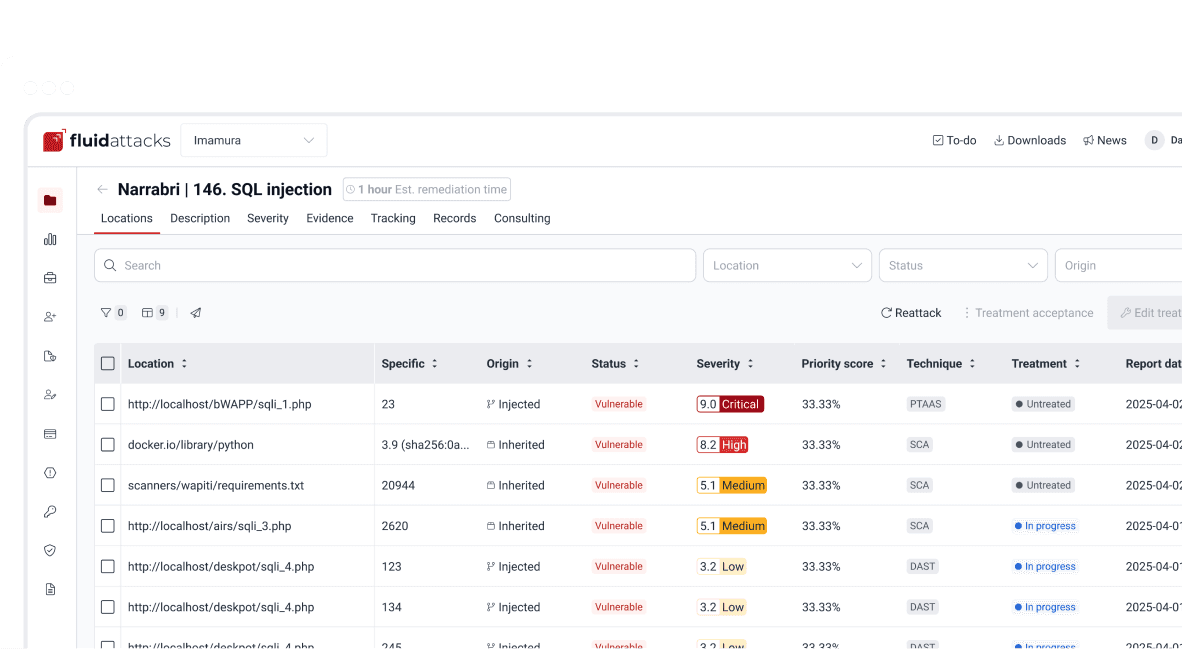Politics
Git on steroids: From messy logs to Data Analytics

Staff Engineer
Updated
Mar 4, 2019
10 min
There is a universal law that anyone in the tech world should know: If you ask a programmer to do something, he/she will do it their way.
Even though creativity, abstract thinking, and putting your signature in your source code is a fundamental part of programming, sometimes it also becomes a barrier when it comes to maintainability, readability and usability due to lack of code standardization.
Many efforts to help programmers to implement best practices in their code have been made, being Python’s PEP 8 and Ruby’s Rubocop Style Guide some of the most popular examples. Linting tools are also of the essence for this task, as they provide a dynamic way for programmers to check if their code is following all the established conventions.
So far, it seems like the standardization problems can be easily solved and never again a bunch of crazy programmers will make a mess out of something.

It's all good.
But wait a minute… Is there any other activity involving a creative process that programmers frequently do? Oh yes, we have Git commit messages.
Most Git repositories have messy logs
Thanks to the Continuous Hacking service we offer at Fluid Attacks, we get to see Git repositories from different organizations in several countries. A vast majority of these repositories have messy logs.
Such problem can be easily explained: Teams do not stick to a specific standard when it comes to commit messages and general Git logging. Programmers just fill out their commit messages the way they personally think it is best.
You may say: Ok, logs may be a little messy, but should I really care that much about them?
The short answer is: Yes, you definitely should.
For the long answer, I am first going to number the cons of having messy Git logs.
Cons
Logs fail to accomplish their purpose:
Usually, due to vague or incomplete commit messages, a commit message log can only be understood by the one who wrote it (just like it happens with source code), thus making the log useless.
Reverting becomes a headache:
If there is not a clear history of your repo, reverting to a previous version given the need will always be painful, as you will have to decipher such history in order to know to what point you want to go back.
Knowing who did what becomes harder:
Good commit messages express, from a high level perspective, what changes were made. Not-so-good commit messages usually have two or three words and do not actually tell the reader what was changed, forcing him/her to look at the source code.
Lastly, let me bring it down to a specific example of how a Git repository history looks when programmers do whatever they want:

Bad Git Log.
Notice how these commit messages do not communicate anything regarding the changes that were made, they’re basically trash logs.
Pros
Other than solving all the cons mentioned above, there are two extra pros:
Data Analytics for the repo becomes possible:
When you have one hundred developers working simultaneously on a repository, you definitely want to know things like:
What percentage of time do they spend fixing bugs?
What percentage of the programmers focus on creating new features?
What are the main causes of reverts in the repo?
And an endless number of questions whose answers might be incredibly useful for both business insights and development performance/quality improving within the company. By having a defined commit message syntax, such answers can be found by using Data Analytics techniques
Logs (partially) become your documentation:
By standardizing commit messages, you will no longer have to create huge documentation manuals explaining all the details of how a product internally works. Each file within the repo will have its related history with detailed information about how it currently works and worked in the past. Some documentation will probably still be needed (user documentation, for example), but we have witnessed how the amount of documentation required dramatically diminishes thanks to good logs.
After setting a standard syntax for commit messages, your repo history will start to look like this:

Good Git Log.
I want you to notice the three most important details to begin with:
Titles include keywords like
feat,front,fix,doc… These tags will be essential for the Data Analytics efforts, as they will allow algorithms to know what the purpose of the commit was.Body section is usually itemized, with every item describing relevant changes made in the commit.
An issue (#N.N) is always referenced with the purpose of understanding what the programmer was trying to do with the commit. This is useful for version control services with issue trackers like Gitlab, Github, etc.
Implementing a commit message Syntax
If by this point you are convinced about the importance of having a standard commit message syntax, and are interested in implementing it, make sure to keep reading, as I will show the syntax we use, the tools that support it, and the benefits we get from it.
In Fluid Attacks we use the Angular JS Commit Message Conventions syntax with a few modifications inspired by our specific needs.
Syntax
The syntax is as follows:
Where:
[variable] are required variables that must be replaced in a final commit message ([] symbols must be removed).
{variable} are optional variables that must be replaced or removed in a final commit message ({} symbols must be removed).
// Comment are comments that must be removed in a final commit message.
In the following sections I will explain in detail what this syntax can help us achieve.
Types
Types offer a high level perspective of the commit purpose. They are explicitly defined in a closed list that covers most (if not all) possible scenarios.
In the syntax, the [type] variable has to be one of the following:
Notice how types are short words that can be easily read by anyone, but also represent keywords that can be processed by a machine.
Scopes
Scopes provide specific detail about what part of the repository/system was modified in the commit. Just like types, they are explicitly defined in a closed list.
In the syntax, the [scope] variable has to be one of the following:
Notice how scopes, just like types, are also human-readable and machine-readable.
Other important rules
Articles like this one and learning on the fly helped us to define other rules for improving general commit message quality:
A Commit title must exist.
A Commit title must not contain the ':' character aside from the one specified in the syntax.
A Commit title must have 50 characters or less.
A Commit title must be lower case.
A Commit title must not finish with a dot '.'.
A Commit title must reference an issue.
A Commit title must be meaningful. Avoid using things like
feat(build): #5.1 feature.A blank line between commit title and commit body must exist.
A commit body must exist.
Lines in commit body must be 72 characters or less.
Try to itemize your commit body.
Do not use the word 'part' for splitting commits for a single issue. Use #[issue-number]{.issue-part} instead as specified in the syntax.
Explaining combinations
Below is a table explaining all the possible combinations between types and scopes for a commit message (Types are columns, scopes are rows):
rever | feat | perf | fix | refac | test | style | |
|---|---|---|---|---|---|---|---|
front | Revert front-end to a previous version | Add new feature to front-end | Improve perf in front-end | Fix something in front-end | Change something in front-end | Add tests for front-end | Change front-end code style |
back | Revert back-end to a previous version | Add new feature to back-end | Improve perf in back-end | Fix something in back-end | Change something in back-end | Add tests for back-end | Change back-end code style |
infra | Revert infra to a previous version | Add new feature to infra | Improve perf in infra | Fix something in infra | Change something in infra | Add tests for infra | Change infra code style |
conf | Revert config files to a previous version | Add new feature to config files | NA | Fix something in config files | Change something in config files | NA | Change config files code style |
build | Revert building tools to a previous version | Add new feature to building tools or add a new building tool | Improve building perf | Fix something in building tools | Change something in building tools | Add tests for building tools | Change building tools code style |
job | Revert jobs to a previous version | Add new feature to jobs or add a new job | Improve jobs perf | Fix something in jobs | Change something in jobs | Add tests for jobs | Change jobs code style |
cross | Revert several scopes to a previous version | Add new feature for several scopes | Improve perf in several system parts | Fix something in several system parts | Change something in several system parts | Add tests for several system parts | Change code style in several system parts |
doc | Revert doc to a previous version | Add new doc | NA | Fix something in doc | Change something in doc | NA | Change doc style |
Where:
perfis performance.infrais infrastructure.configis configuration.docis documentation.NAis not applicable.
Differences with pure AngularJS syntax
In this section I will talk about the changes we made to the original AngularJS syntax and the reasons behind them.
Types
Instead of creating a particular syntax only for reverts as specified in the AngularJS' document, for the sake of simplicity, we decided to make a rever type that follows the same syntax as everything else.
The docs type was renamed to doc and turned into a scope. The reason of such change was to make doc commits more informative by allowing programmers to specify the purpose of the documentation change. For example:
feat(doc): documenting new feature.
fix(doc): fixing documentation.
style(doc): changing its style.
We added a perf type for performance changes with the purpose of identifying what commits have a performance improvement as main objective and reducing the number of commits that would fall under the refac type.
chore type was removed as any maintenance commit can be translated to a perf/refac/fix commit.
In order to have shorter commit titles, we shortened types like docs to doc, revert to rever, refactor to refac.
Scopes
When it comes to scopes, the difference consists in us having a closed list of keywords while AngularJS allowing programmers to specify any scope they want.
According to the AngularJS document, “Scope can be anything specifying place of the commit change. For example $location, $browser, $compile, $rootScope, ngHref, ngClick, ngView, etc…”.
We, on the other hand, consider that this information should go in the commit [title].
By moving the “place of the commit change” to the [title], we get to define some generic scopes that allow us to make commit messages more informative.
Scopes like front, back, build, etc, although not as precise as ngClick, are machine-readable and still provide information about where the change was made. This, combined with allowing the programmer to be more specific in the [title], is why we decided to create a closed list for scopes.
Other differences
The last big difference between the AngularJS syntax and ours is the #[issue-number]{.issue-part} part, whose purpose is to force commits to always reference an issue in order to be able to track what motivated such commit.
Other minor differences, like making a maximum of 50 characters for the commit title mandatory, are either based on personal opinions of what we think makes a commit message look better, or preferring rules taken from other places over the AngularJS ones.
Make syntax usage a reality
You may be thinking: Ok, we just defined a huge commit message syntax with a ton of rules. But, how are we actually going to make programmers follow it in a pragmatic way?
Enter the savior: Commitlint.
Commitlint is an incredible tool that can check all the syntax we just defined. Not only it runs all the checks instantly, but it works as a Git hook, which means that it runs all the checks right after a programmer runs a git commit command on his/her local machine. It is even capable of failing the commit attempt if the commit message the programmer just provided happens to be non-syntax-compliant.
Proof of concept
We won’t be setting up Commitlint for this specific syntax as it would make the article too technical. Nevertheless, I will show you how it currently works in one of our repos:
Bad commit message

Failed commit.
The commit we entered was:

Bad commit message.
The Commitlint output was:

Failed Commitlint output.
Notice how Commitlint dynamically tells the programmer what specific rules his/her commit message is not following, making the fix process a lot easier. The commit attempt was also stopped by Commitlint, as it doesn’t allow commits to pass unless their message is syntax compliant.
Good commit message

Passed commit.
The commit we entered was:

Good commit message.
The Commitlint output was:

Passed Commitlint output.
Notice how Commitlint tells the programmer that all checks passed and proceeds to accept the commit.
A little bit of Data Analytics
Now that we have defined a commit message syntax, I would like to show you a few very simple Chartio charts we are now able to generate from our Integrates repository:
Pie chart of monthly commit types for February 2019

Monthly commit types for February 2019.
This chart allows us to know the percentage of commits for every type in a month.
One possible interpretation can be:
During February, 2019, out of 132 commits, 39.4% of them (52) had developing a new feature as their purpose.
Pie chart of monthly commit scopes for February 2019

Monthly commit scopes.
This chart allows us to know the percentage of commits for every scope in a month.
One possible interpretation can be:
During February, 2019, out of 132 commits, 33.3% of them (44) were focused on the back-end of the site.
Heatmap chart of monthly commit types vs scopes for February 2019

Monthly commit heatmap.
This chart allows us to know:
What type/scope combinations were mostly used.
What type/scope combinations were never used.
In general, we can get insights about what programmers did and where they did it.
One possible interpretation can be:
During February, 2019, out of 132 commits, 20 of them were feat(back), leading us to think that programmers spent a considerable amount of their time programming new functionalities in the back-end of the site.
It does not end here
Now that we have a commit message syntax and our Git logs are growing everyday, it is up to us to think what we want to do with the normalized data we’re getting.
Many different charts and analysis can be done, it is just a matter of asking ourselves:
What do we want to know?
Can we know it with the data we currently have?
if so, lets make it happen!
Conclusion
In this article we’ve covered from the importance of Git logs to what benefits we can obtain by standardizing our commit message syntax and implementing tools for checks like Commitlint, being Data Analytics the most important one.
I invite you to check the commit history of our public repository: Product.
Want to get more technical?
Make sure to visit our Commit Message Documentation Page. There you will be able to find more detailed information regarding our commit message syntax and other interesting topics like expanding syntax checks to Gitlab Merge Requests.
That was it! Have a good one!
Get started with Fluid Attacks' ASPM solution right now
Other posts















